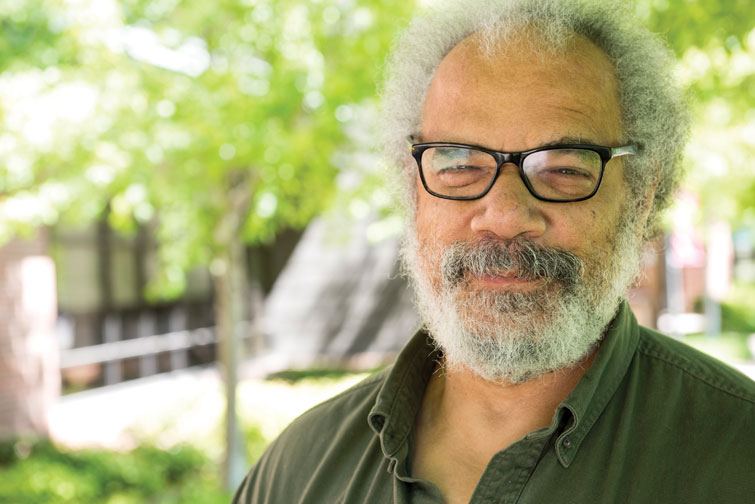What does it mean to matter? What does it look like to matter?
With the Black Lives Matter movement, questions of racial equity have ignited important—and difficult—conversations in communities and courtrooms, on political campaign trails, and on college campuses.
Augsburg College Professor William “Bill” Green studies and writes about history and law. His most recent book, “Degrees of Freedom: The Origins of Civil Rights in Minnesota, 1865–1912,” chronicles conditions for African American Minnesotans and others in the half-century following the Civil War. Today, Minnesota and the nation are very different than they were in the postbellum period that Green examined, but tightly woven threads unite contemporary events with those occurring more than a century earlier.
Q: What prompted your interest in studying the history of African Americans in Minnesota?
A: In 1860, a slave woman was freed in a Minneapolis courtroom. In the aftermath, citizens in the communities of St. Anthony and Minneapolis for days walked the streets eyeing their neighbors, waiting for the smallest provocation to spark violence. We were on the verge of seeing our own little civil war erupt in Minnesota over the issue of slavery. Ultimately, Minnesotans’ attention was averted by news of the Confederate bombardment of the federal installation of Fort Sumter. Upon hearing the news, Minnesota was the first state to send volunteers into the Union Army. Seven years later, it would be the first state to extend voting rights to black men, pre-dating the ratification of the 15th Amendment. I felt compelled to understand this dynamic.
Q: When Minnesota granted suffrage to people who are black, what implications did this have in citizens’ lives?
A: In a practical sense, the implications were non-existent. There simply weren’t enough black voters in Minnesota to influence political leaders or affect public policy. Symbolically, however, during a time of mounting economic dislocation coupled with the spread of white supremacy, it raised the bar, not just in terms of the broader virtue of racial equality, but, more fundamentally, stressing the need for true leadership that called on ordinary people to overcome their baser instincts and choose to act with common decency.
Q: And yet you’ve said that race is “written between the lines” of early Minnesota history, rather than spoken about directly. What do you mean?
A: The fact that the black population was so small made it easy for historians and opinion makers to draw rosy pictures of racial exceptionalism without needing to be checked by a more balanced reality. Without the “significant other” whose history was hidden in footnotes, it became easy to believe what one wanted to believe. But could it really be true that Dred Scott was the only slave to live in Minnesota? Could Frederick Douglass be the only African American to be denied service in a prestigious hotel in St. Paul, even though the proprietor was a friend of his and an officer in the Union Army? Could the paucity of discrimination lawsuits in the 19th century really mean there was no discrimination in restaurants and taverns?
Q: Today’s Black Lives Matter movement involves participatory democracy—participation by many and with more diffuse leadership than the civil rights movements of the 1960s. When you look at the Black Lives Matter movement, what strikes you considering the lens through which you write your books?
A:In 1965 when the civil rights movement pressed for voting rights, the powerful symbolism of Martin Luther King and Malcolm X joining forces placed pressure on the President of the United States to shepherd through Congress the Voting Rights bill and sign it into law. Federal protection of the right to vote was a moral issue. But it was the union of two leaders who embodied opposing approaches to advancing civil rights that heightened a sense of urgency to enact the bill. The moral: As long as there are no “inside”-“outside” forces simultaneously working for the same clearly defined issue, advocates on either side of the spectrum can be marginalized and eventually dismissed. I don’t see a rival force to Black Lives Matter that is pushing for the same ends but through different means. This isn’t the fault of BLM, but the absence of a “significant other” should be a concern to them, nonetheless. History can only provide suggestions on how or even whether to proceed.
The Minnesota Book Awards honored Green with the 2016 Hognander Minnesota History Award.





